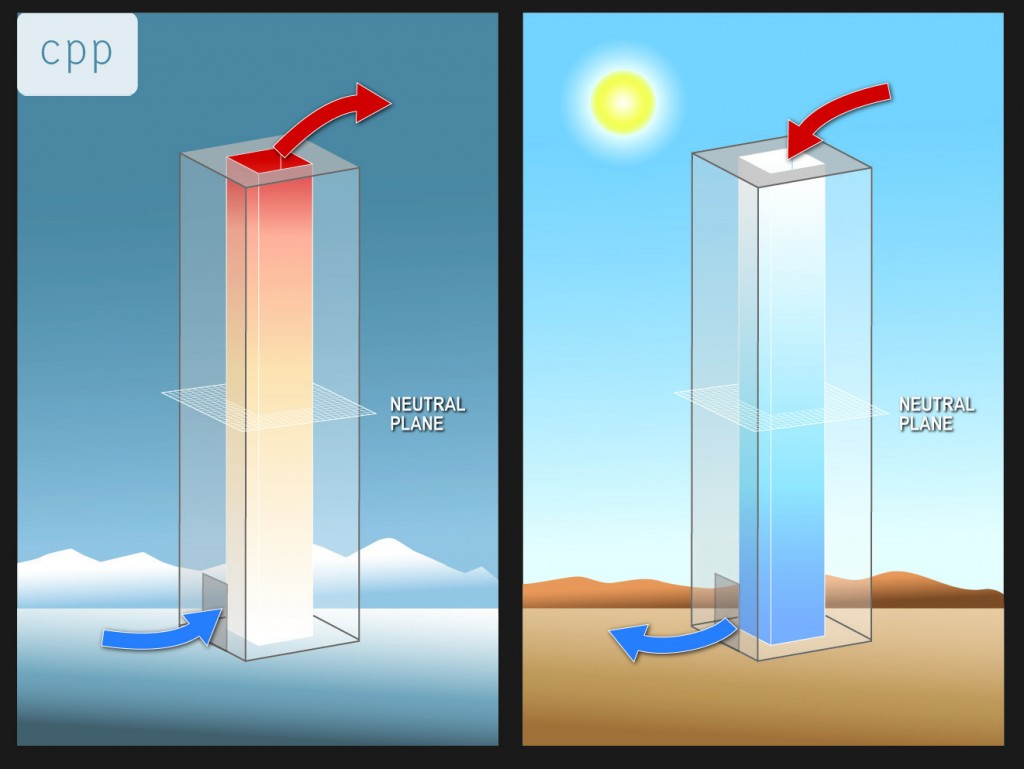News
Natural cooling strategies
Buildings traditionally rely on mechanical air conditioning to ensure occupant comfort and safety during hot weather. But such mechanical systems can sometimes be downsized or eliminated altogether when engineers and architects integrate the local climate into the design.
Natural cooling depends on a systems approach, in which many aspects of building design work together to keep an occupied space comfortable. Some components of an effective natural cooling strategy include the following.

An illustration of night cooling Climate and latitude-specific design. A detailed understanding of variations in weather patterns and a site’s location lets designers take advantage of specific phenomena like seasonal winds, sun angles, and total insolation.
Wind-driven ventilation. Under the right wind conditions, building openings can be strategically opened and closed to encourage cross ventilation.
Buoyancy-driven ventilation. During periods of calm, designers can take advantage of the so-called stack effect, which is based upon warm air’s tendency to rise. With the right ceiling outlets and ground-level inlets, the difference in pressure can be enough to encourage a gentle flow of air from bottom to top. While not generally as effective as wind-driven ventilation, buoyancy-driven flow can be appreciable for tall buildings especially.
Night cooling. Especially in climates with large differences between the daytime high and overnight low, the interior space can be flushed with cool outdoor air at night while the building is unoccupied. Key to this strategy is selecting materials and construction techniques that give the building a large thermal mass to serve as a heat sink during the nighttime flush.
Adaptive comfort models, such as those described in ASHRAE 55-2013 and ISO 7730, account for variations in human behavior throughout the year, such as clothing choice and exposure to outdoor elements prior to entering the building.
CPP’s wind and air quality engineers have worked on natural ventilation and passive cooling projects around the world. Please contact CPP today and put our expertise to work on your next project to ensure safety, comfort, and efficiency.
